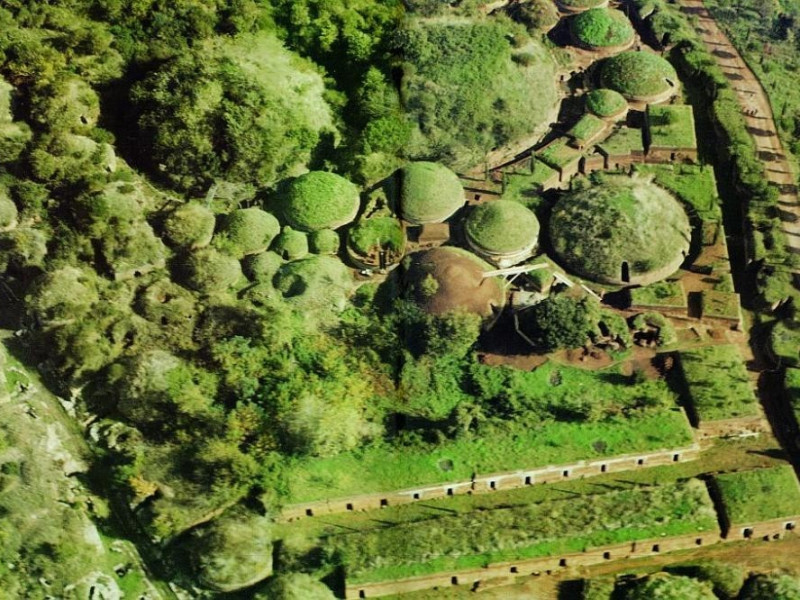Destinazioni - Comune
Cerveteri
Where
Cerveteri (Roma)
Cerveteri [tʃerˈvɛːteri] is a town and comune of the northern Lazio, in the province of Rome. Originally known as Caere (also Caisra and Cisra in Etruscan, Agylla, Άγυλλα in Greek), it is famous for a number of Etruscan necropoleis.
Cerveteri is believed to have been one of the city-states of the Etruscan League and at its height, around 600 BC, its population was perhaps around 25,000 - 40,000 people.
Main sights
Necropolis of the Banditaccia
The most famous attraction of Cerveteri is the Necropoli della Banditaccia, which has been declared by UNESCO a World Heritage Site together with the necropolis in Tarquinia. It covers an area of 400 hectares (990 acres), of which 10 hectares (25 acres) can be visited, encompassing a total of ca. 1,000 tombs often housed in characteristic mounds. It is the largest ancient necropolis in the Mediterranean area. The name Banditaccia comes from the leasing (bando) of areas of land to the Cerveteri population by the local landowners.
The tombs date from the 9th century BC (Villanovan culture) to the later Etruscan period (3rd century BC). The earliest tombs are in the shape of a pit, in which the ashes of the dead were housed; also simple potholes are present.
From the Etruscan period are two types of tombs: tumulus-type tombs and the so-called "dice", the latter being simple square tombs built in long rows along roads within the necropolis. The visitable area contains two such roads, the Via dei Monti Ceriti and the Via dei Monti della Tolfa (6th century BC).
The tumuli are circular structures built in tuff, and the interiors, carved from the living rock, house a reconstruction of the house of the dead, including a corridor (dromos), a central hall, and several rooms. Modern knowledge of Etruscan daily life is largely dependent on the numerous decorative details and finds from such tombs. One of the most famous tombs is the so-called Tomba dei Rilievi (Tomb of the Reliefs, 3rd century BC), identified from an inscription as belonging to one Matunas and provided with an exceptional series of frescoes, bas-reliefs and sculptures portraying a large series of contemporary life tools.
The most recent tombs date from the 3rd century BC. Some of them are marked by external cippi, which are cylindrical for men, and in the shape of a small house for women.
A large number of finds excavated at Cerveteri are in the National Etruscan Museum, Rome, with others in the Vatican Museums and many other museums around the world. Others, mainly pottery, are in the Archaeological Museum at Cerveteri itself.
Others
The Rocca (castle)
Church of Santa Maria Maggiore, including a medieval section reachable from the 1950s addition through a triumphal arch.
Palazzo Ruspoli, rebuilt as baronal palace by the Orsini in 1533. The portico and the loggia on the façade are from the 17th century. It is connected to Santa Maria Maggiore through a passetto (enclosed bridge), built in 1760.
The small church of Sant'Antonio Abate, with a 1472 fresco by Lorenzo da Viterbo.
The medieval burgh of Ceri
Castle of Cerenova
Cerveteri DOC
Around the city of Cerveteri is an Italian DOC wine region that produces red and white blended wines. The red wines are blends of 60% Sangiovese and Montepulciano, 25% Cesanese and up to 30% of Canaiolo, Carignan and Barbera. The grapes are limited to a harvest yield of 15 tonnes/ha and the final wine must have a minimum alcohol level of 11%. The white wines are composed of a minimum blend of 50% Trebbiano, Romagnolo and Giallo, a maximum of 35% Malvasia di Candia and a maximum of 15% Friulano, Verdicchio, Bellone and Bombino bianco. The grapes are limited to a harvest yield of 14 tonnes/ha and the final wine must have a minimum alcohol level of 12%.
Ancient bishopric
For the ancient bishopric that originally had its seat in Cerveteri and is now a titular see, see Caere.
Twin cities
Fürstenfeldbruck, Germany
Livry-Gargan, France
Almuñécar, Spain
See also
References


